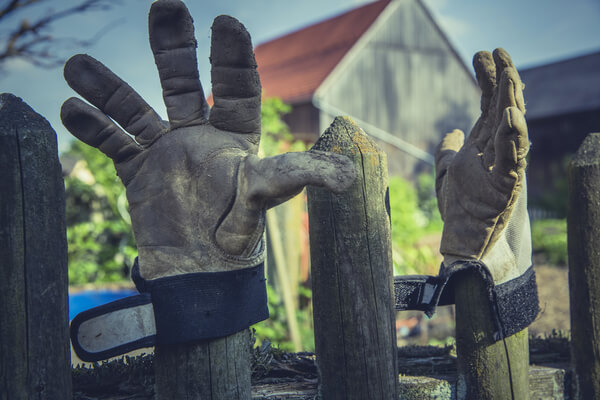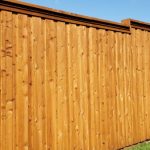
Shutterstock.com / By markus spiske
Gardening is a beloved British pastime and one that has been enjoying a resurgence of interest in recent years. As with any hobby, it is important to have the right tools for the job and we have covered the gardening basics in a previous article. However, there is one piece of gardening equipment which is often forgotten or disregarded altogether, gardening gloves.
A lot of people choose to forgo gardening gloves, but a good pair is essential and allows you to accomplish more in your garden. From keeping your hands clean to pruning thorny rose bushes, the humble garden glove is a must-have for any serious gardener.
Table of Contents
What are gardening gloves?
Gardening gloves are gloves designed for aiding you in safely completing a variety of garden tasks. As mentioned previously, many people choose to garden without gloves as they enjoy the feeling of soil and plants in the hands. But the truth is that you should wear gloves every time you have something to do in your garden as the dangers of gardening without gloves outweigh the feeling of soil.
The gloves do more than just keeping your hands clean. They will help protect your hands from insect bites, prevent your skin from drying out, provide a better grip when handling tools, and stop pesticides from coming into contact with your skin.
Types of gardening gloves
There are four main types, and countless brands, of gardening gloves to choose from. There are traditional gardening gloves made of leather, cotton, and rubber, and each one is used for specific garden tasks.
- Traditional garden gloves – These are the gardening gloves you will find in all garden centres and are usually made from a waterproof material, with the fingers and palms covered in rubber. These are the best gardening gloves for general tasks, such as weeding, potting, and planting.
- Leather gloves – These heavy-duty gloves are mostly used for handling tools which can cut, poke, or scrape your hands.
- Cotton gloves – This type of gardening glove can be worn all year as they are lightweight. They are mostly used when handling tools which require a more flexible use of your hands, such as a lawn mower, strimmer, or chainsaw.
- Rubber gloves – These are the best gardening gloves for clearing your yard of debris and for providing extra grip when handling metal and wood.
How to pick gardening gloves
There are two things to take into consideration when buying gardening gloves. One, are they suitable for the task and, two, do they fit?
According to use
- Light gardening tasks – Cotton gloves are most suited for tasks, such as mowing the lawn and using a strimmer.
- Heavy gardening tasks – Choose leather gloves for tasks, such as moving rocks or handling tools, which could easily pierce other types of gloves.
- Wet gardening tasks – If the soil is wet, you are moving a pile of wet leaves, or mixing and using pesticide or fungicide, the gloves which offer the best protection are rubber gloves.
- General gardening tasks – For smaller tasks, such as weeding and planting, the best gloves to use are the traditional multipurpose gardening gloves.
What gloves will thorns not go through?
Gloves made from materials like leather, synthetic leather, or heavy-duty rubber are best for shielding against thorns. Leather gloves are a common choice for handling thorny plants like roses. Gardening gloves made from cowhide or goatskin provide great puncture resistance and durability.
Lighter and usually more flexible, synthetic substitutes—gloves strengthened with Kevlar or nitrile—offer comparable protection. To stop thorns from getting into vulnerable places, pick gloves that fit tightly and cover the wrists.
What size gardening gloves do you need?
As gardening is heavily reliant on the use of your hands, using gloves which fit you correctly is quite important. If the gloves you choose are too small, your hands will feel restricted and you may not have a full range of motion. But if the gloves are too big, they can slip off of your hands, make you clumsy, increase your chances of injuring yourself with a garden tool, and generally make gardening more difficult than it has to be.
The best way to ensure that you choose the right size is to try the gloves on before buying them, if possible. Here are a couple of general tips you can use to tell if the gloves are the right size for you once you try them on.
While you are wearing the gloves, check the fingertips. If there is space between the tips of your fingers and the fabric, then the gloves are too big for you.
Make fists with your hands and move them around. The fabric should be close to your skin, but not so tight that your movements are restricted.
Most brands of gardening gloves will include their size either on the glove itself or on its label, so if it’s not possible to try them on, you can use the given sizes as a guide. If you want to make sure you are buying the right size, you can measure your hands before going to the shop.
To measure your hands for gloves, you will need a tape measure and your hand. Wrap the tape measure around your knuckles to measure their circumference. When you have the measurement, use the chart below to find your size.
- S = 6.5 to 7.25 inches;
- M = 7.5 to 7.75 inches;
- L = 8 to 8.75 inches;
- XL = 9 to 9.75 inches;
- XXL = 10 to 10.75 inches;
- XXXL = 11 to 12 inches.
How to take care of gardening gloves
Taking care of your gardening gloves is important unless you want to replace them often. It is not difficult, though.
- Traditional gardening gloves – These gloves are machine washable and should be washed at a warm temperature. Then, simply hang them up to dry.
- Leather gloves – This type of glove can be a little more troublesome compared to the rest. Always brush off any dirt after having finished your garden tasks. Leather gloves can become very stiff if left dirty. Clean them by applying a pumice-based soap such as the ever-popular Lava. Rinse them and leave to dry. After that apply linseed oil or Vaseline. Carefully spread it with a clean piece of cloth and rub it in. Do this on the outside and inside of the glove. Once dry, the leather gloves should be soft. Some gloves, made of softer leather, can be machine washed, but always check the label.
- Cotton gloves – There is no issue with machine washing cotton gloves. You can also dry them in a tumble dryer.
- Rubber gloves – These are the easiest to look after. Simply rinse rubber gloves under a hose or a sink which isn’t used very often.
A neat glove storage tip is to install some pegs where you store the other gardening tools. When you have washed them, just hang them up near the other tools. This will let them air dry and will make them easy to find.
So, there we have it, your guide to choosing the best gardening gloves. They are as vital to gardening as a spade or a rake and will protect your hands while gardening. For the sake of your hands, please start wearing gloves.
***
Did we miss anything? Do you have any advice for choosing gardening gloves? Let us know in the comments below or give us a shout on social media!




The best I read till date!!
Interesting read, but I would like it would be interesting to read about non-standard material gloves because some people might have an allergy to certain materials.
Choose the gardening gloves that would best fit your needs.
If your leather gloves are for work, the concern about a perfect fit is critical. So, pay attention to these signs to know if it meets your requirements: the glove fingers, the glove palm and back, and your hand dexterity.